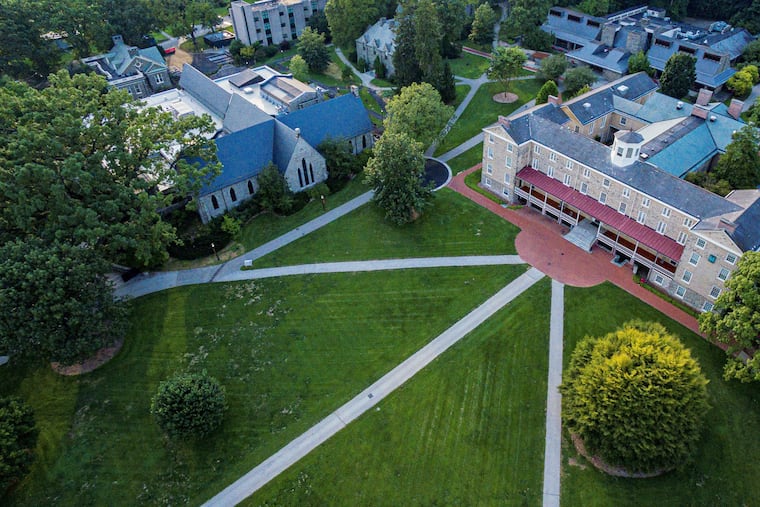Haverford students end strike after getting demands met
After two weeks, students said most of their demands aimed at improving campus conditions for Black students and other groups had been met.

After two weeks, Haverford College students called an end to their strike Wednesday, saying most of their demands aimed at improving campus conditions for Black students and other groups had been met.
Haverford president Wendy Raymond agreed to step down as interim chief diversity officer, as students had called for, and the college will create an accountability group to be sure the college follows through on its promises. The school committed to renovation of the Black Cultural Center, bias training, compensation up to 20 hours for student workers who participated in the strike, and other initiatives around academics and mental health.
» READ MORE: Haverford students on strike after college officials' comments on Walter Wallace Jr.'s death
“I think the strike achieved a much greater level of accountability and transparency from the administration than I’ve seen in the past two years,” said senior Soha Saghir, former cochair of Haverford’s honor council.
In an email to the campus community Wednesday evening, Raymond credited the students from the Women of Color House, Black Students Refusing Further Inaction, Black Student League, and their allies with inspiring “extraordinary work that will lead to extraordinary change.”
The strike started in late October after Raymond and the college dean sent an email urging students not to participate in protests in Philadelphia after police shot and killed Walter Wallace Jr.
Students on strike didn’t attend classes, do course work, or perform jobs at the college. They said they were angry that the school, which touts itself as caring about social justice, would try to discourage them from taking part in the demonstrations over the police shooting of a Black man within miles of the campus. The president and dean later clarified that they were not trying to suppress students’ rights but were concerned about their safety.
But concerns about the college’s treatment of Black and brown students had been mounting long before the college leaders sent the email. They are emblematic of growing unrest on college campuses that have been inflamed by the deaths of more Black people at the hands of police and a pandemic that has worsened inequities.
Some students at nearby Bryn Mawr College also participated in the strike in a show of solidarity and since then have issued demands to their school. Bryn Mawr students are continuing their strike and have meetings scheduled with the administration this week, said Aaliyah Joseph, 20, one of the chief organizers.
“We’re essentially going for institutional implementation of transformative justice,” said Joseph, a junior history major from Portland, Ore.
At Swarthmore College, students also have issued demands but have not called a strike, a spokesperson said.
The strike at Haverford caused some disruption, and some students who weren’t participating were upset and left campus. The college posted on its website the ongoing communication between strike organizers and the president.
Raymond, who is white, announced last week that she would step down as the interim chief diversity officer, a position she didn’t intend to keep, and that provost Linda Strong-Leek, who is Black, would step into the position. The college’s board of managers approved the creation of an accountability group made up of campus members and outside experts, who will evaluate the college’s progress toward its antiracism commitments, she said.
“The opportunity to build a renewed Haverford stands before us,” Raymond said in her email. “While the past two weeks have been tremendously disruptive, we recognize that true disruption is often required to make meaningful change.”
Saghir said several hundred students gathered on Founders Green in rain jackets and under umbrellas on Wednesday to celebrate what they had accomplished. They heard from a Black alumnus who participated in a similar boycott at Haverford when he attended the school in 1972, she said.
“It’s amazing the strike happened in 1972 and their demands were so similar and it took the school 48 years,” she said.
But the last 14 days, she said, finally brought change.